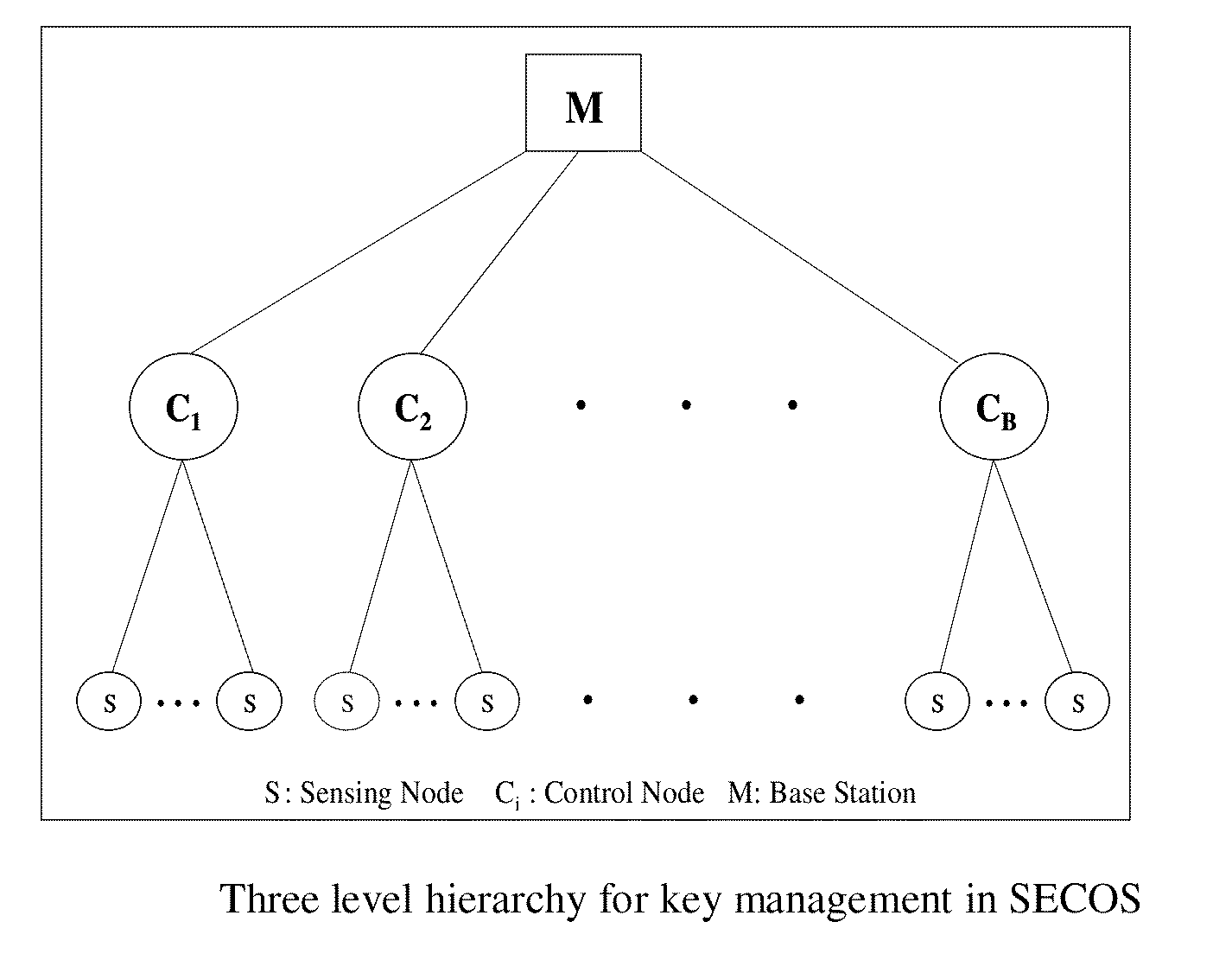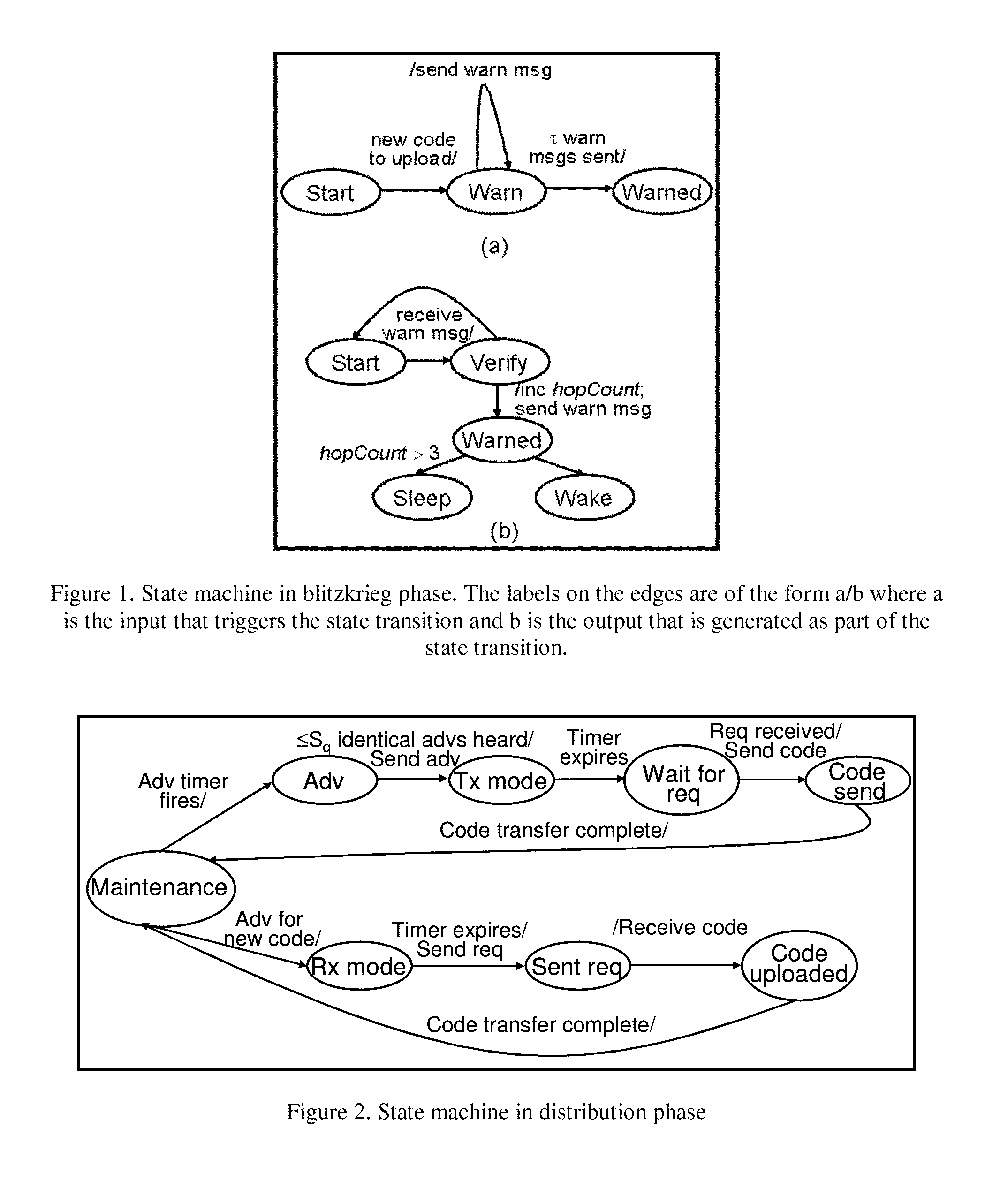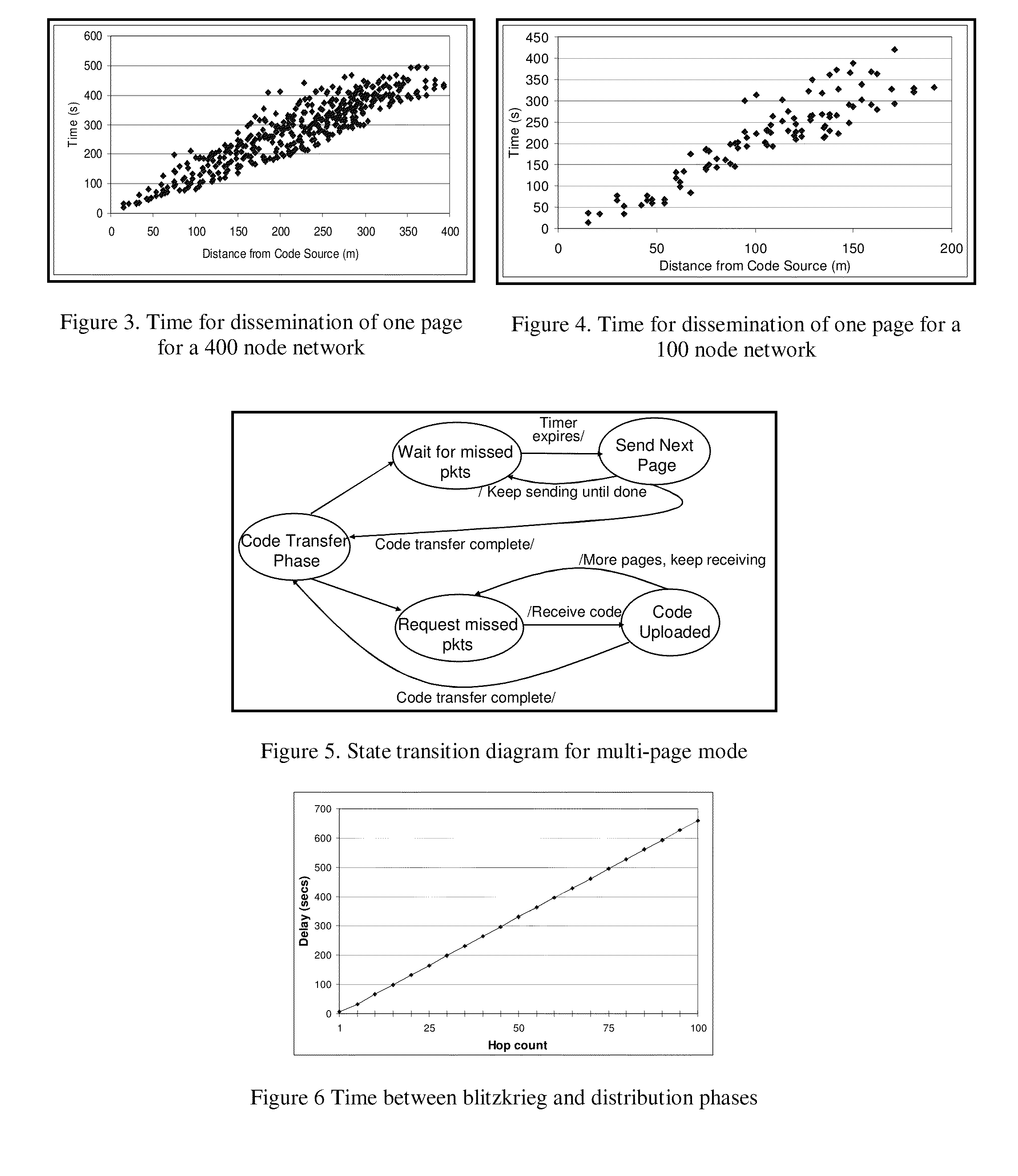Protocol for secure and energy-efficient reprogramming of wireless multi-hop sensor networks
a wireless multi-hop sensor and wireless technology, applied in the field of wireless sensor networks, can solve the problems of network functionality likely degraded, resource cost of reprogramming, and reduction to zero
- Summary
- Abstract
- Description
- Claims
- Application Information
AI Technical Summary
Benefits of technology
Problems solved by technology
Method used
Image
Examples
case1
[0203] If feature number 1 is valid, then B is the only node in possession of the encrypted packet holding the key E(K, {umlaut over (K)}). Thus, the control node, C, does not have it and though it has K, it can never obtain the shared key {tilde over (K)}.
Case2: If feature number 2 holds, the proposition can be proved using mathematical induction as follows.[0204]Base case: Let the number of compromised nodes in the network be NC. If NC=0, there is no compromised node and the claim is trivially satisfied. If NC=1, this compromised node could be either the control node of A and B or any other node. If it is not the control node then the session can not be disclosed since only the control node, other than A, can decrypt the packet holding the Envelop. Consider that the single compromised node is the control node. Two cases are possible. (1) Nodes A and B have a previous shared key using an old control node. The current compromised control node does not know this key because the old c...
case 1
the regular cache. This occurs with probability αC that can be calculated as follows:
[0246]αC=SC×λSGcom×μ+(1-λμ)∑k=0SC{(N-1K)(1N-1)k(1-1N-1)N-1-k}(25)
[0247]The term (SC×λ) / (SGcom×μ) represents the probability that the key is found in the regular cache during the send of the first packet and the subsequent terms represent the probability that the second, the third, the fourth, etc packets hit. We assume that the size of the regular cache is greater than the number of packets sent in p seconds. However, αC=1 if the cache size is greater than the communication group size (SC>SGcom). If there is a hit in the regular cache, no overhead energy is spent.
Weighted energy overhead=Energy overhead per miss. Probability=0.
case 2
n the regular cache and the destination is in the same control group. The probability of regular cache miss is βC=1−αC. The probability of communication within one control group is SGctrl / SGcom. If SGctrl>SGcom, i.e., the control group is larger than the communication group, then the communication is always within one control group and the probability is one.
[0248]Weighted energy overhead = Energy overhead per miss.(26)Probability=(2×S(k_req)+S(k_rep))×Hctrl×Energy×βc×(SGctrlSGcom)
PUM
 Login to View More
Login to View More Abstract
Description
Claims
Application Information
 Login to View More
Login to View More - R&D
- Intellectual Property
- Life Sciences
- Materials
- Tech Scout
- Unparalleled Data Quality
- Higher Quality Content
- 60% Fewer Hallucinations
Browse by: Latest US Patents, China's latest patents, Technical Efficacy Thesaurus, Application Domain, Technology Topic, Popular Technical Reports.
© 2025 PatSnap. All rights reserved.Legal|Privacy policy|Modern Slavery Act Transparency Statement|Sitemap|About US| Contact US: help@patsnap.com



